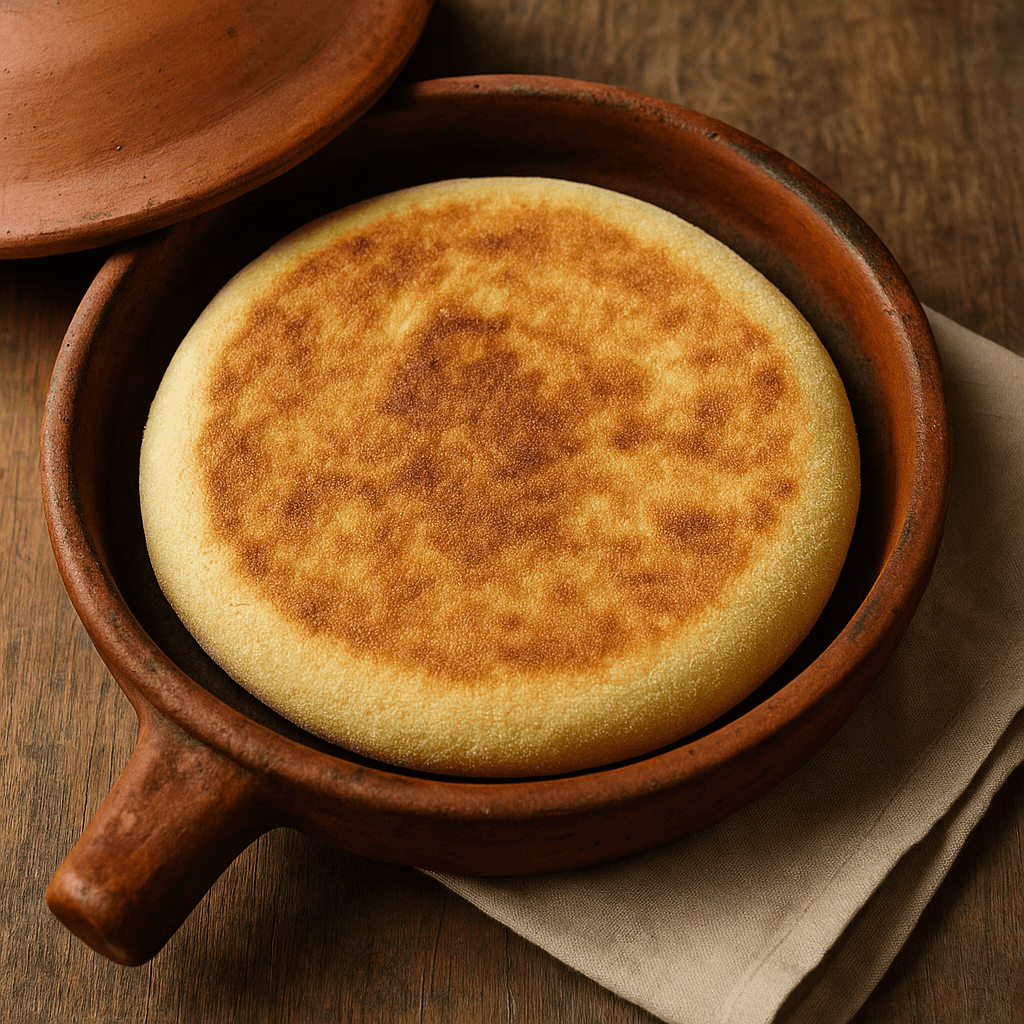

Matlouh, sometimes spelled matloua or matoula, is one of the most beloved traditional Moroccan breads, especially in Berber and rural communities.
Made from a blend of fine and coarse semolina flour, this flatbread is known for its light, spongy texture and slightly nutty flavour.
Unlike conventional oven-baked loaves, matlouh is traditionally cooked on a ferrah (an earthenware tagine) or a cast iron griddle over an open flame — a time-honoured technique still widely used in Moroccan countryside homes.
This versatile Moroccan semolina bread is often served warm with olive oil, honey, or smen (fermented butter), and is a staple accompaniment to tagines, soups like harira, or mezze-style salads. Its soft interior and golden exterior make it perfect for scooping up dips or mopping up rich sauces. As a key part of ancestral Moroccan baking traditions, matlouh offers an authentic taste of homemade North African comfort.
⦁ 5 cups (1 kg) fine wheat semolina
⦁ 1 teaspoon salt
⦁ 3½ tablespoons (25 g) yeast or 5 tablespoons sourdough starter
⦁ 2 cups (500 ml) warm water (plus more as needed)
⦁ 1 cup (200 g) medium wheat semolina (for shaping)
1. In a wide, shallow dish, place the fine semolina and make a well in the center.
2. Add salt and dissolved yeast or starter into the well with a little warm water.
3. Gradually add the rest of the warm water and knead vigorously until the dough is soft and elastic. It should be slightly softer than regular bread dough.
4. Divide the dough into three equal balls, sprinkle with coarse semolina, and flatten each into a round pancake shape.
5. Place on a clean tea towel, cover with another towel, and allow to rise in a warm place for about 1 hour.
6. Preheat a ferrah or cast iron griddle over low heat.
7. Once risen, gently lift the breads and place on the hot surface. Cook 12–15 minutes per side until deeply golden and cooked through. Flip carefully to prevent breaking.
8. Optional: Brush with egg yolk and sprinkle with sesame seeds before cooking.
🛒 Choosing Ingredients
✔ Fine Semolina (Durum Wheat) – Key for a smooth, elastic dough with a soft interior
✔ Medium or Coarse Semolina – Essential for shaping and creating a golden crust
✔ Fresh Yeast or Sourdough Starter – Both work well; yeast gives faster rise, starter adds tang
✔ Warm Water (38–40°C / 100–104°F) – Helps activate yeast without killing it
✔ Optional Garnishes – Egg yolk wash + sesame seeds add traditional texture and color
👩🍳 Preparation Tips
✔ Knead Until Elastic – Dough should feel soft, slightly sticky, and spring back when pressed
✔ Flour the Surface – Use semolina (not flour) for shaping to maintain rustic texture
✔ Pancake Shape – Flatten to 2–3 cm (¾–1 in) thickness for even cooking
✔ Proper Rise – Let dough double in size in a warm spot (25–30°C / 77–86°F) for optimal sponge
🔥 Cooking Techniques & Temperatures
✔ Traditional Surface – Use a ferrah (clay tagine base) or cast iron griddle for best results
✔ Preheat Slowly – Heat over low to medium-low flame (150–175°C / 300–350°F) to avoid burning the crust before the inside cooks
✔ Cook Time – 12–15 minutes per side; flip gently with a flat spatula to avoid deflating
✔ Even Browning – Press lightly on top if needed to ensure full contact with the surface
🍞 Serving & Storage
✔ Serve Warm – Best enjoyed fresh with olive oil, honey, or smen (fermented butter)
✔ Pairs Well With – Tagines, harira soup, lentil stews, or zaalouk (eggplant salad)
✔ Storage – Wrap in a cloth and store at room temp for up to 2 days; reheat in a pan before serving
✔ Freezer Friendly – Freeze cooled flatbreads with parchment between layers; reheat from frozen on a hot pan